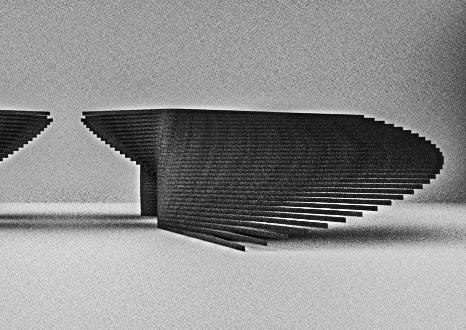
2 minute read
The problemof the house is a problemof the era
16 to 30
31 Floors and above tenement building
Advertisement
Introduction
tenement building + skyscraper vertical mixed society (population growth)
Tum te acendam quidem Rompl. Natis. Itum etimum, senatinve, Cat, videstimus conducionit, quidieret, nihicivius bonsulvit. Bata di, conlos ete, Catur aurnumedem postra vium, co contum.
Feriorro


There

must
Be Height Restrictions Over The Flight Route Of The Aircraft




The buildings in the area are mainly residential buildings, ranging from old tenement buildings over half a century old on Ma Tau Kok 13th Street to single-family mansions in Kadoorie Hill and Kowloon Tong. In addition, Ho Man Tin and Hung Hom Bay are the newly developed high-rise luxury residential areas in the area. Kowloon City, Kowloon Tong, Ma Tau Wai and Ma Tau Kok used to be within the statutory airport obstacle height control area of Kai Tak Airport. Although the buildings in the area were built in the 1980s or 1990s, they were also affected by height restrictions. Buildings rarely exceed 16 storeys, and in urban areas, the average height of buildings in the district is significantly lower than in other urban areas. However, with the closure of Kai Tak Airport in 1998 and the subsequent urban redevelopment, many single-family residences higher than 16 storeys have been built in Hung Hom, To Kwa Wan and Kowloon City.
The building below the runway is only six stories high Buildings constructed in the 1980s or 1990s were also affected by height restrictions, with the tallest buildings rarely exceeding 16 storeys
The average height of buildings in the district is significantly lower than other urban areas
With the closure of Kai Tak Airport in 1998 and the subsequent urban redevelopment, many single-family residences above 16 storeys were built

In recent decades market-oriented politics has marginalised the construction of public and social infrastructure, especially housing, and turned the necessity of housing provision (the home, shelter, the right to housing) into a commodity form to be bought, sold, circulated and exploited toward maximum financial gain (exchange-value supersedes use-value). Instead of the collective social function of housing in the city there is a commodification process of housing and a narrative of individual desire and a perpetual cycle of consumption.

Flat old building
The picture shows that the old building used to be the same height as if it was flat
As the population grows, the more space is needed, so it develops upwards (the building below the runway is only six stories high Buildings constructed in the 1980s or 1990s were also affected by height restrictions, with the tallest buildings rarely exceeding 16 storeys



The average height of buildings in the district is significantly lower than other urban areas)



Pin-in buildings

The building site area is small but the building height is disproportionately high
Pin-in buildings are usually more common in old districts, because in the past, neither the tenement buildings nor the dwellings were so high. As one of the old buildings was acquired Therefore, all the area of the old building will be used to build high-rise buildings.
(With the closure of Kai Tak Airport in 1998 and the subsequent urban redevelopment, many single-family residences above 16 storeys were built)











